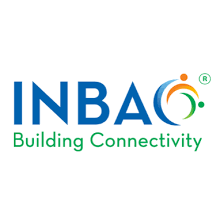


VITAL is an emerging company in India dedicated to revolutionizing the way we assess and certify buildings' digital infrastructure, connectivity, and technological capabilities. As urban areas in India continue to grow and embrace digital transformation, the demand for reliable and efficient technological frameworks has become crucial. VITAL aims to fill this gap by offering comprehensive ratings that evaluate essential elements such as internet speed, network reliability, cybersecurity protocols, and the adaptability of buildings to integrate advanced technologies. With a mission to empower property owners and enhance tenant confidence, VITAL is positioned as a leader in the rapidly evolving landscape of building technology.






























































Certifying a building on Digital and Smart Infrastructure involves evaluating and recognizing the building's capability to integrate advanced technologies and systems for improved efficiency, sustainability, security, and occupant comfort. Here are several reasons why certifying a building for its digital and smart infrastructure is beneficial:

MISSION :
To establish a global standard for evaluating and certifying smart, sustainable, and digitally integrated buildings, ensuring that they enhance occupant experience, operational efficiency, environmental performance, and long-term adaptability.
This mission focuses on setting measurable benchmarks for buildings that incorporate advanced digital technologies to improve building performance, sustainability, and user engagement.
VISION :
To transform the global building industry by promoting the adoption of smart digital infrastructure, enabling buildings to be more intelligent, sustainable, responsive, and resilient to future technological advancements and environmental challenges.
This vision looks ahead to a world where smart buildings contribute to energy efficiency, occupant well-being, and a lower carbon footprint, with digital systems at the heart of building design and management.
THE PURPOSE OF THE SMART DIGITAL INFRASTRUCTURE BUILDING RATING SYSTEM IS TO :
1. Guide the Development of Smart Buildings: Provide a clear framework for integrating digital and smart technologies into building design, construction, and operation, ensuring these technologies enhance performance in areas such as energy management, indoor environmental quality, occupant comfort, and building automation.
2. Assess and Certify Building Intelligence: Establish a standardized methodology for evaluating the digital and smart capabilities of a building, including how well its infrastructure supports data-driven decision-making, automation, and sustainability.
3. Promote Sustainability and Efficiency: Encourage the adoption of digital technologies that optimize resource usage (energy, water, and waste), reduce environmental impact, and contribute to a circular economy.
4. Enhance Occupant Experience and Well-Being: Focus on the human-centered aspect of smart infrastructure by ensuring that buildings adapt to the needs of occupants, improve comfort, safety, and health, and offer seamless connectivity and services.
5. Ensure Future-Proof Design and Scalability: Provide guidance on designing buildings with flexible and scalable digital infrastructures that can evolve with future technological advancements and changing user needs.
6. Align with Climate NET ZERO and Smart City Goals: Support global efforts to create a NET ZERO environment with more sustainable, livable cities by encouraging the integration of smart infrastructure in buildings that align with smart city initiatives and climate action goals
